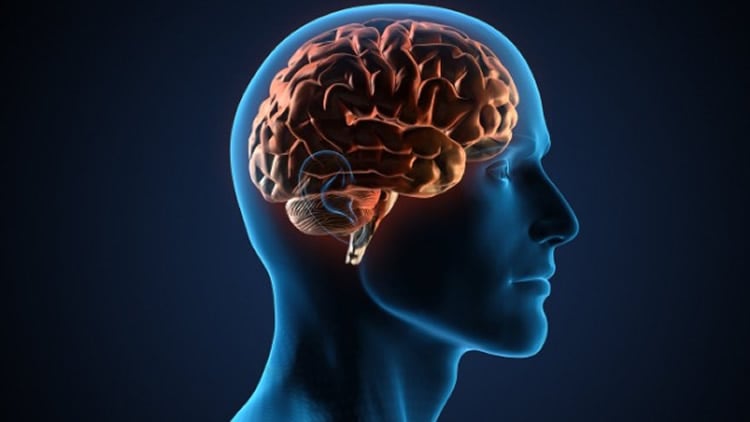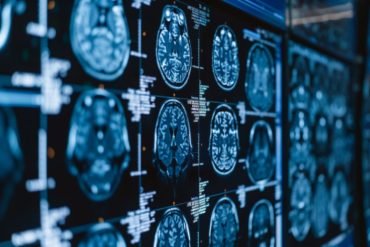Summary: Transcranial magnetic stimulation applied to the parietal lobe improves the function of brain areas important for memory which are disrupted by aging. The study reports TMS helps improve memory in older adults experiencing memory loss to the level of younger adults.
Source: Northwestern University
Stimulating a precise location of the brain’s memory center with electromagnetic pulses improves the memory of older adults with age-related memory loss to the level of young adults, reports a new Northwestern Medicine study.
“Older people’s memory got better up to the level that we could no longer tell them apart from younger people,” said lead investigator Joel Voss, associate professor at Northwestern University Feinberg School of Medicine. “They got substantially better.”
The study used Transcranial Magnetic Stimulation (TMS) to target the hippocampus – the brain region that atrophies as people grow older, which is responsible for memory decline.
The study will be published April 17 in Neurology.
“It’s the part of the brain that links two unrelated things together into a memory, like the place you left your keys or your new neighbor’s name,” Voss said. “Older adults often complain about having trouble with this.”
This type of memory worsens as we age. Nearly all people experience a decline in their memory ability as they age.
The new study of 16 people — ages 64 to 80 with normal age-related memory problems – shows it’s possible to alter memory ability in older adults using this type of brain stimulation, Voss said. “There is no previous evidence that the specific memory impairments and brain dysfunction seen in older adults can be rescued using brain stimulation or any other method.”
Voss’s team located the hippocampus – which is smaller in older adults – individually for each participant with an fMRI. An fMRI (functional MRI) measures how active a part of the brain is at a given time.
Then, they located an area of the parietal lobe that communicates with the hippocampus for stimulation delivery. This spot was behind and slightly above a person’s left ear, but everyone had a slightly different spot.
It isn’t possible to directly stimulate the hippocampus with TMS, which is noninvasive, because it’s too deep in the brain for the magnetic fields to penetrate. So, Voss and colleagues identified a superficial brain region close to the surface of the skull with high connectivity to the hippocampus.
“We stimulated where brain activity is synchronized to the hippocampus, suggesting that these regions talk to each other,” said first author Aneesha Nilakantan, a neuroscience graduate student working in Voss’ lab.
At baseline, younger and older adults were given memory tasks in which they learned arbitrary relations between paired things, such as this object goes on this spot on the computer screen. Younger adults score about 55 percent correct and older adults less than 40 percent correct.
The research team then applied high-frequency repetitive magnetic stimulation to the spot for five consecutive days for 20 minutes a day. Stimulating this area improved the function of regions important for memory that are disrupted by aging, evident by more neural activity visible on an fMRI.
Then, 24 hours after the final stimulation, the subjects were given a new memory test in which they had to learn new arbitrary relations between paired things. After the brain stimulation, older adults scored at the level of young adults on the memory tasks.

The study also used a fake placebo stimulation condition, which did not improve memory.
Voss and colleagues will next test this approach on participants with mild cognitive impairment, the early stage of Alzheimer’s disease. They will be stimulating the brain for longer periods of time.
Voss isn’t certain how long the effects could last. He suggests the enhanced memory effects could last longer with more stimulation. For instance, when depression is treated with TMS for five weeks, those patients get an antidepressant effect that lasts for many months, he noted. In a future study, Voss will be stimulating the brain in persons with age-related memory loss for more weeks to test this.
Funding: This research was funded in part by the National Institute on Aging grants T32AG20506, F31AG057109 and R01AG049002 of the National Institutes of Health.
Source:
Northwestern University
Media Contacts:
Marla Paul – Northwestern University
Image Source:
The image is adapted from the Northwestern University news release.
Original Research: Closed access.
“Network-targeted stimulation engages neurobehavioral hallmarks of age-related memory decline”
Aneesha S. Nilakantan, M.-Marsel Mesulam, Sandra Weintraub, Erica L. Karp, Stephen VanHaerents, Joel L. Voss. Neurology doi:10.1212/WNL.0000000000007502
Abstract
Network-targeted stimulation engages neurobehavioral hallmarks of age-related memory decline
Objective To test whether targeting hippocampal-cortical brain networks with high-frequency transcranial magnetic stimulation in older adults influences behavioral and neural measures characteristic of age-related memory impairment.
Methods Fifteen adults aged 64 to 80 years (mean = 72 years) completed a single-blind, sham-controlled experiment. Stimulation targets in parietal cortex were determined based on fMRI connectivity with the hippocampus. Recollection and recognition memory were assessed after 5 consecutive daily sessions of full-intensity stimulation vs low-intensity sham stimulation using a within-subjects crossover design. Neural correlates of recollection and recognition memory formation were obtained via fMRI, measured within the targeted hippocampal-cortical network vs a control frontal-parietal network. These outcomes were measured approximately 24 hours after the final stimulation session.
Results Recollection was specifically impaired in older adults compared to a young-adult control sample at baseline. Relative to sham, stimulation improved recollection to a greater extent than recognition. Stimulation increased recollection fMRI signals throughout the hippocampal-cortical network, including at the targeted location of the hippocampus. Effects of stimulation on fMRI recollection signals were greater than those for recognition and were greater in the targeted network compared to the control network.
Conclusions Age-related recollection impairments were causally related to hippocampal-cortical network function in older adults. Stimulation selectively modified neural and behavioral hallmarks of age-related memory impairment, indicating effective engagement of memory intervention targets in older adults.






